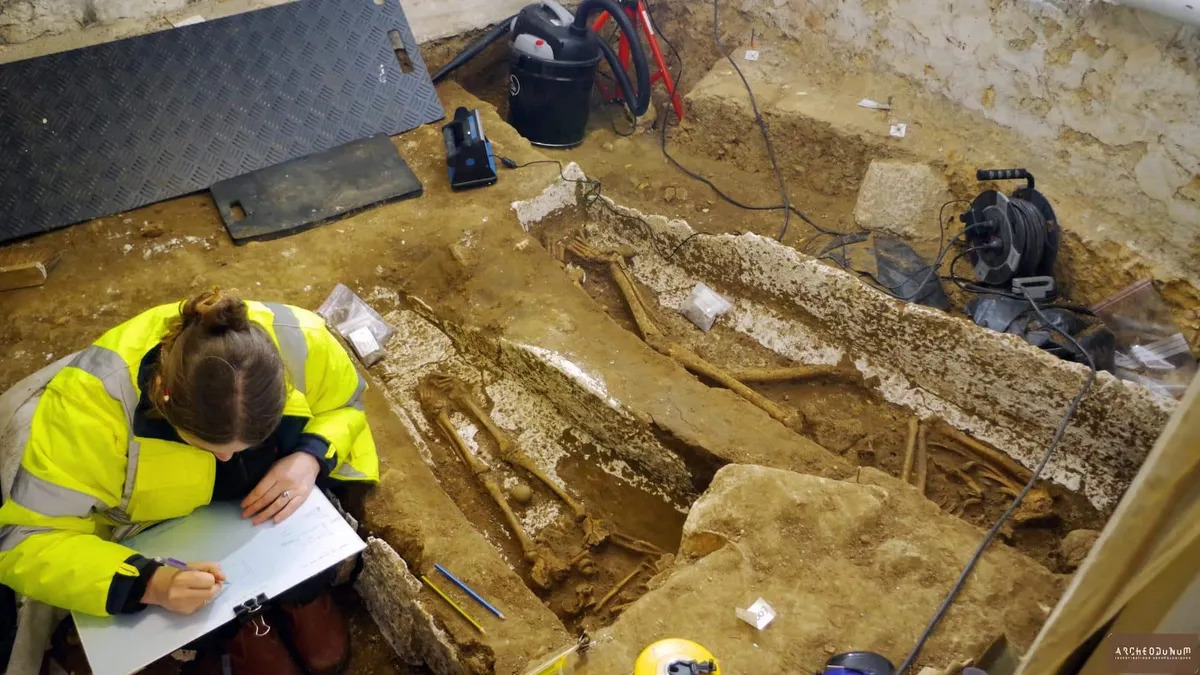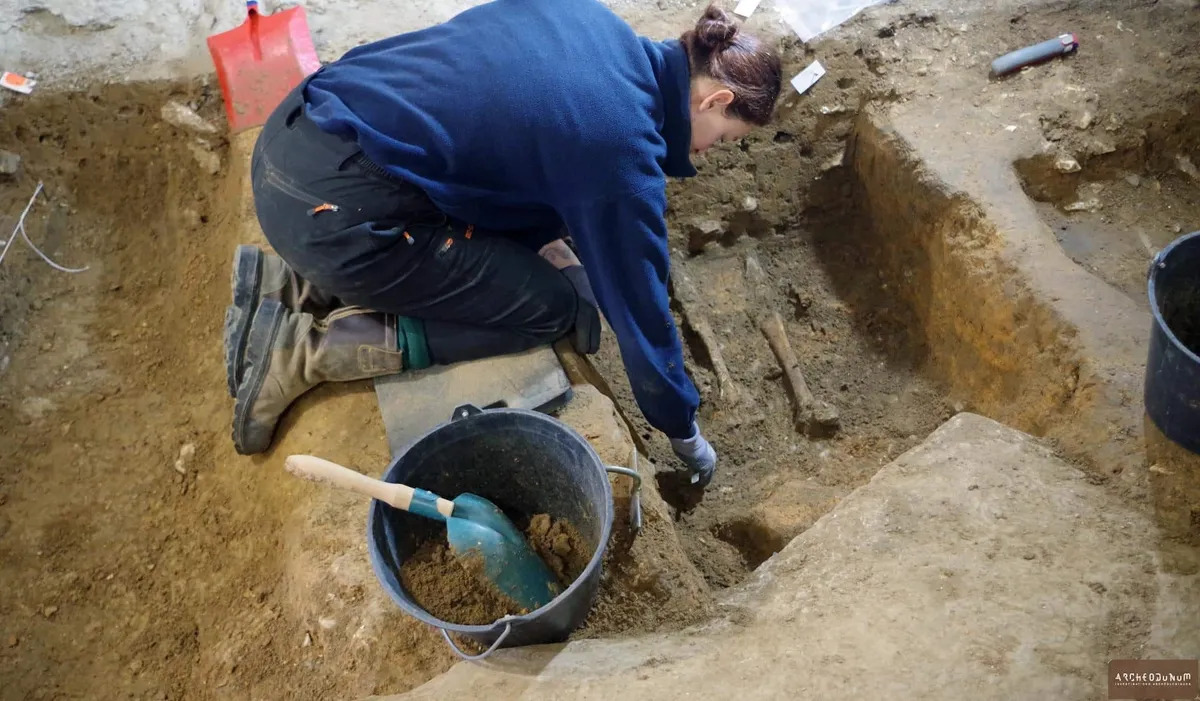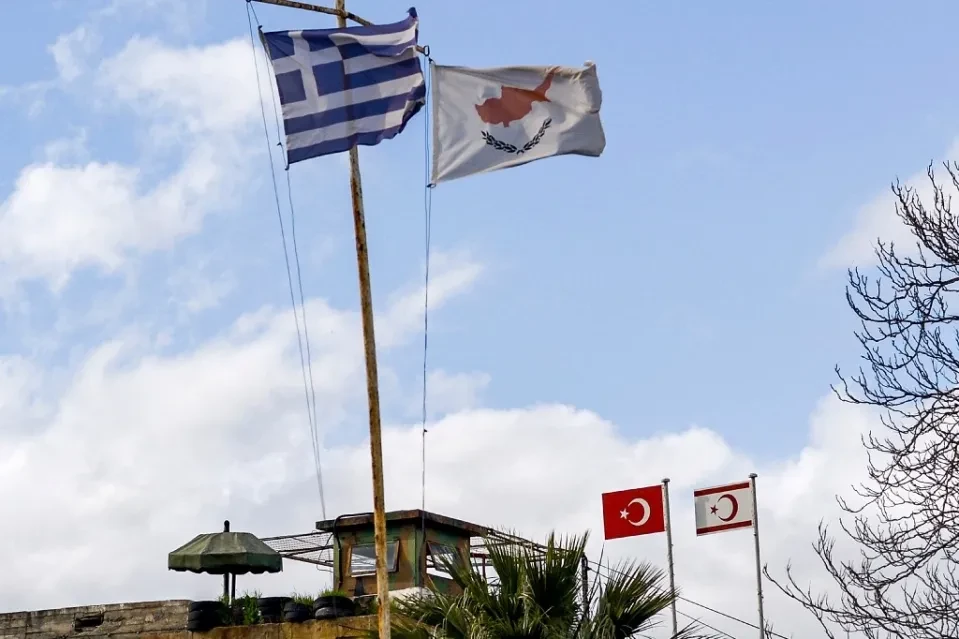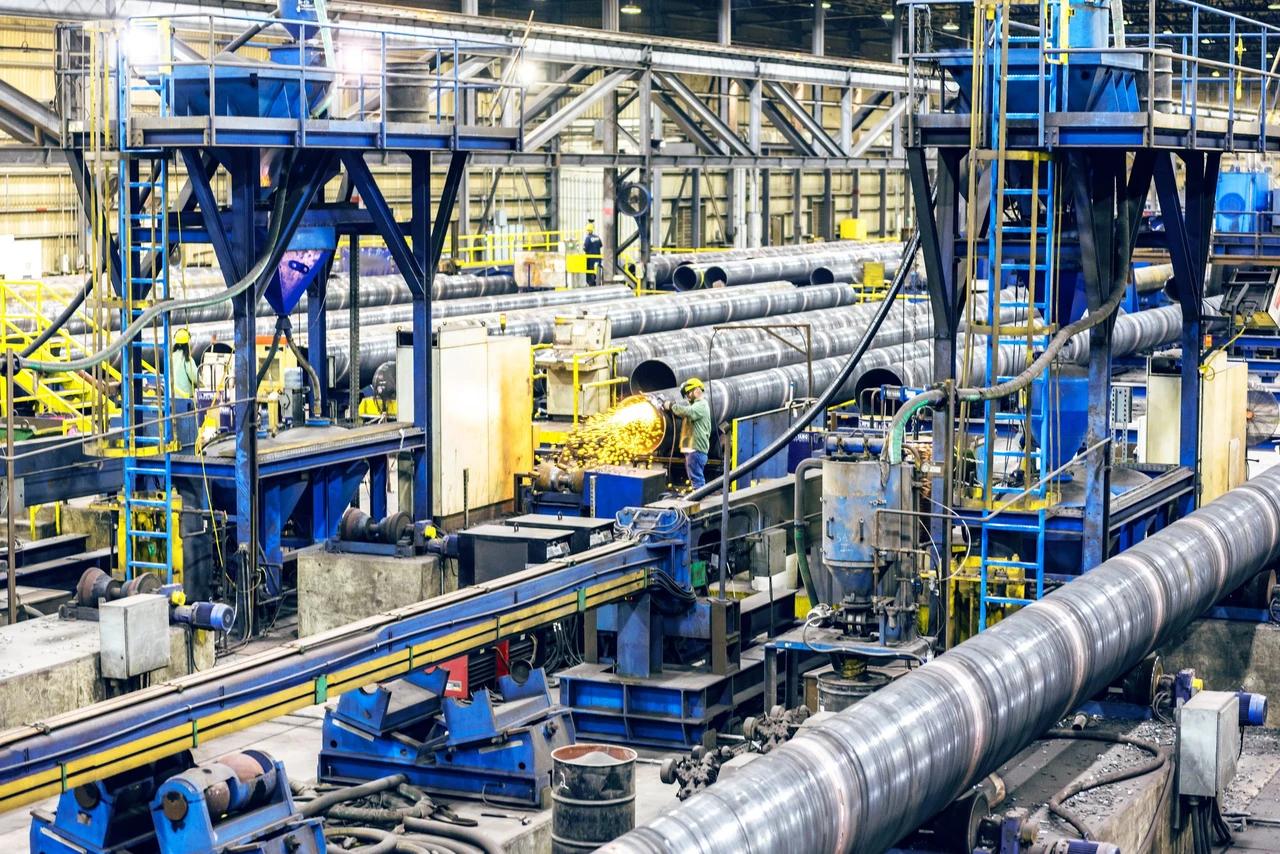700-year-old ancient Roman burial site discovered in Paris basement
 The ancient graves were discovered in the basement of a house located in a southern suburb of Paris, believed to be built on the site of a medieval chapel, Paris, France, October 9, 2024. (Photo via Archeodunum)
The ancient graves were discovered in the basement of a house located in a southern suburb of Paris, believed to be built on the site of a medieval chapel, Paris, France, October 9, 2024. (Photo via Archeodunum)
A homeowner near Paris uncovered a cemetery dating back 700 years during a basement renovation.
The ancient Roman burial site also includes graves from the Merovingian period, offering a unique look into how funeral traditions changed over time. The discovery came as a surprise to archaeologists, as the area was initially thought to be a medieval cemetery.

Unearthing ancient Roman, Merovingian burials in France
In 2023, the homeowner in the Montconseil district of Corbeil-Essonnes found a skeleton while renovating the basement. Archaeologists from Archaeodunum began excavations soon after, uncovering 38 graves that stretch back to the third century A.D.
The site’s oldest burials, from the Late Roman period, show bodies laid on their backs in wooden enclosures that have since rotted. More recent graves from the Merovingian era, which spanned from 476 to 750 A.D., revealed 10 plaster sarcophagi. These unique sarcophagi were arranged side by side in a fan shape.
A statement from the archaeologists explained: “The discovery of even older tombs was unexpected.” Initially, researchers believed the site to contain only medieval graves because a seventh-century chapel once stood in the area.

Ancient Roman burial site connected to medieval chapel, older pagan temple
The graves were found beneath a house thought to have been built on the site of the medieval Notre-Dame-des-Champs chapel. The chapel itself was constructed above an even older pagan temple dedicated to a natural spring.
Despite previous excavations nearby, no evidence of the chapel or temple has been discovered. This excavation marks the first time the cemetery connected to the chapel has been studied.
The Merovingian sarcophagi at the Roman burial site were largely undecorated, although one was originally covered by a stone block carved with a rosette and two crosses. Archaeologists noted that similar designs were commonly found in Christian burial sites during that period.

Analysis of the skeletons to uncover burial practices
The archaeologists are now analyzing the skeletons in a laboratory to gather more information about the people buried at the ancient Roman site. They hope to determine the sex, age, health, and diet of the individuals, providing new insights into the population that lived in the area during the Late Antiquity and the Middle Ages.
As the archaeologists noted: “The burial ground will help us understand the population that lived here and how funeral traditions evolved.”
The discovery of the cemetery is expected to offer valuable information about life and death in France over centuries, and further study of the site is expected to reveal even more details about this ancient population.



